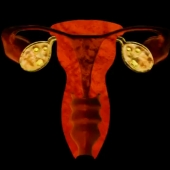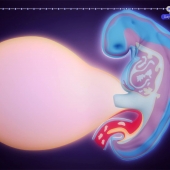Sometimes synthetic prostaglandins, which can be taken by mouth or placed inside the vagina, are used to dilate the cervix. Mechanical dilators are used — such as a small balloon-tipped catheter or small rods made from seaweed (laminaria).
The balloon-tipped catheter is inserted beyond the cervical opening. Saline injected through the catheter expands the balloon, causing the cervix to widen. Dilators inserted into the cervix absorb moisture and get thicker, opening the cervix.
Use of laminaria can cause cramping. Cervical ripening techniques are typically done in the hospital. After prostaglandin use, your contractions and your baby's heart rate will initially be monitored.
The Cook® Cervical Ripening Balloon with Stylet is used for mechanical dilation of the cervical canal prior to labor induction at term when the cervix is unfavourable for induction.
CONTRAINDICTIONS:
Patient receiving or planning to undergo exogenous prostaglandin administration; placenta previa, vasa previa, or placenta perceta; transverse fetal orientation; prolapsed umbilical cord; prior hysterotomy, classic uterine incision, myomectomy or any other full-thickness uterine incision; pelvic structural abnormality; active genital herpes infection; invasive cervical cancer; abnormal fetal heart-rate patterns; breech presentation; maternal heart disease; multiple gestational pregnancy; polyhydramnios; presenting part above the pelvic inlet; severe maternal hypertension; any contraindication to labor induction; ruptured membranes.
WARNINGS:
• Concomitant use of the Cook Cervical Ripening Balloon with exogenous prostaglandins may increase the risk of adverse events associated with prostaglandin administration, including, but not limited to: uterine hyperstimulation, impaired utero-placental circulation, tachysystole, uterine rupture, placental abruption, amniotic fluid embolism, pelvic pain, retained placenta, severe genital bleeding, shock, fetal bradycardia, fetal death, and maternal death.
• The stylet should only be used to traverse the tip of the catheter through the cervix and should be removed as soon as the uterine balloon is above the level of the internal uterine opening (internal os) prior to full insertion of the catheter. Aggressive insertion may result in injury to the baby.
• The product should not be left indwelling for longer than 12 hours.
• The safety and effectiveness of the Cook Cervical Ripening Balloon has not been established among women with an obstetrical history of low transverse caesarean section.
• The safety and effectiveness of extra-amniotic saline infusion with the Cook Cervical Ripening Balloon has not been established.
• Always inflate the balloon with a sterile saline. Never inflate with air, carbon dioxide, or any other gas. Do not overinflate. Excessive pressure to inflate the balloon on this device can cause the balloon to rupture.
PRECAUTIONS:
• If fetal membranes rupture spontaneously while the Cook Cervical Ripening Balloon is in place, it is recommended that both balloons be deflated and the device removed in preparation for spontaneous active labor contractions.
- 11664 views













